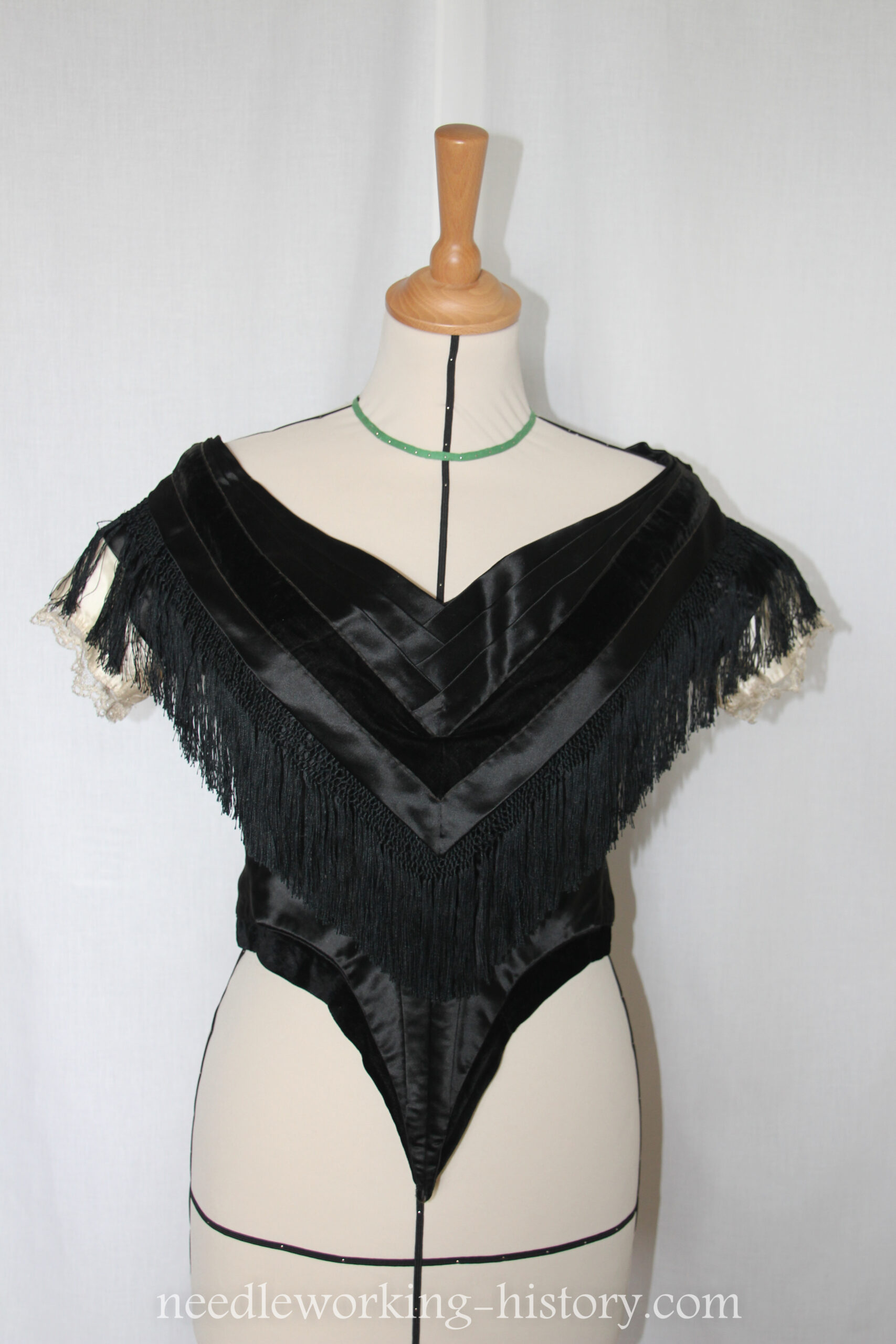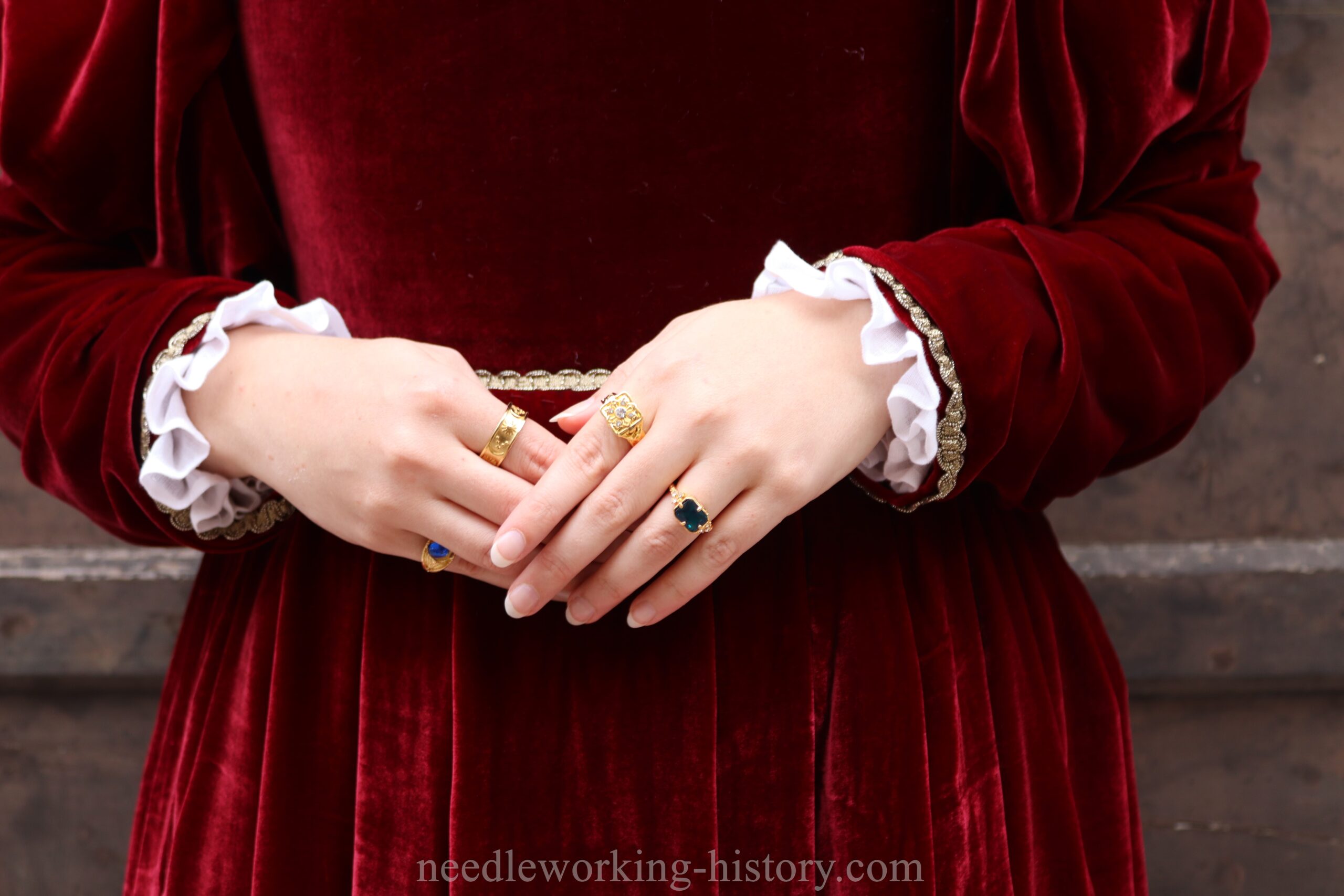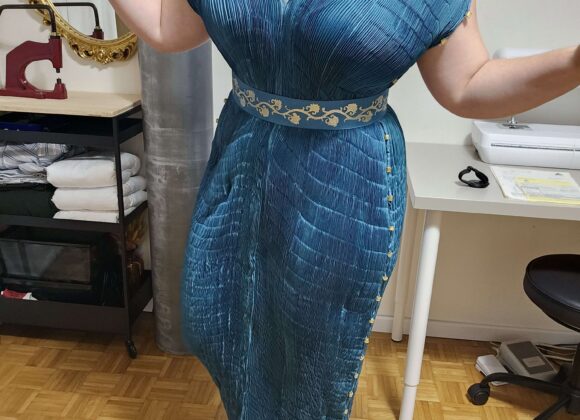Today I have something special for you: My newest addition to my very small original garments collection!
A few weeks ago I bought a beautiful bodice in vienna. The seller, she owns a vintage shop here, had many beautiful garments but most of them had horrible mending done like fusible interfacing to hide rips in the fabric. Sadly the things were really expensive and I’m not able to restore those things without further damaging them so I only took one bodice with me although there were a few other things I’d love to buy. Maybe in the future!
I don’t have any information about the bodice. I don’t know where it’s from or who it belonged to. The seller said the bodice is from the 1880s but I think the bodice is earlier.
Well. Let’s start with a few pictures!



As you can see I’ve got a beautiful black bodice with tiny creme colored sleeves. It’s made from silk, which I think is a silk duchesse. The little sleeves are made with a silk satin backed with cotton. The bodice also has a silk velvet decoration on the bertha and also on the bottom edge.
The beautiful fringe trim is also pure silk.
The lining is a white cotton which discoloured over the centurys.



The bodice closes at the back with spiral lacing instead of criss cross. There was a band to close the bodice and the seller said it was original to the bodice but I don’t think that. Instead of one band there were two and they are about 80cm long and are made from a soutache and a corset lace. (pieced)
Maybe parts of those band is original to the bodice but not completley.
The bertha closes on the left shoulder with two tiny little hooks

Here is a detail shot of the bodice front. You can see two little holes in the fabric which I think are from a brooch or something similar.
Since the bodice is pretty ‚plain‘ I can see how the woman who wore the dress wanted to decorate it a bit with a matching brooch to her jewellry.



And now let’s talk about the inside!
The bodice is completly hand sewn with strong cotton thread and features a waist band. The cotton under the arms is pretty stained but I don’t think those are normal sweat stains. I think the black silk bleeded pretty badly. I also made a sniff test and there was no old sweat smell. (My 1900s dress I own smells pretty bad unter the arms..)
Of course the smell coul’ve been gone since it’s so old but I can imagine that the dress got cleaned with a bit of water or alcohol under the arms and the silk startet bleeding onto the cotton.
The next thing I was pretty excited for was the boning. All boning is real baleen and I was so happy that a few seams came loose and revealed it. You also can see the small holes were it got sewn in place.
The next wonderful thing I found are those little tucks in the neckline on the back. They were probably made after the first or second fitting so that it fits snuggly to the back/shoulder blades.
I also measured the bodice and found out, that the bodice has my corseted measurments and since I’m pretty short and the bodice is it too, it would have fitted pretty good but I didn’t try it on because I saw that the sleeves are to narrow for my arms. I was also scared of breaking any baleen boning. 😀
(Bust: 95 cm and Waist: 72 cm)
Since I couldn’t try it on I decided to take the pattern from the bodice and remake it to my arm size 😀 And I think the bodice also deserves a pretty skirt to go with! But this will be a winter project 😀
My conclusion: As you could see the bodice had a pretty pointed center front which was a typical feature of dresses from the 1850s to 60s. It also has a pretty short torso. The true waistline is about 4-5 cm above the bottom edge of the side seam.
The bertha also indicates early 60s for me. I looked a bit through german/austrian fashion magazines like ‚Der Bazar‘ and found that the bodice fits to the very early 1860s the most.
The bodice is completly hand sewn which also is an indicator for pre 80s.
What do you think? How would you date the bodice?




